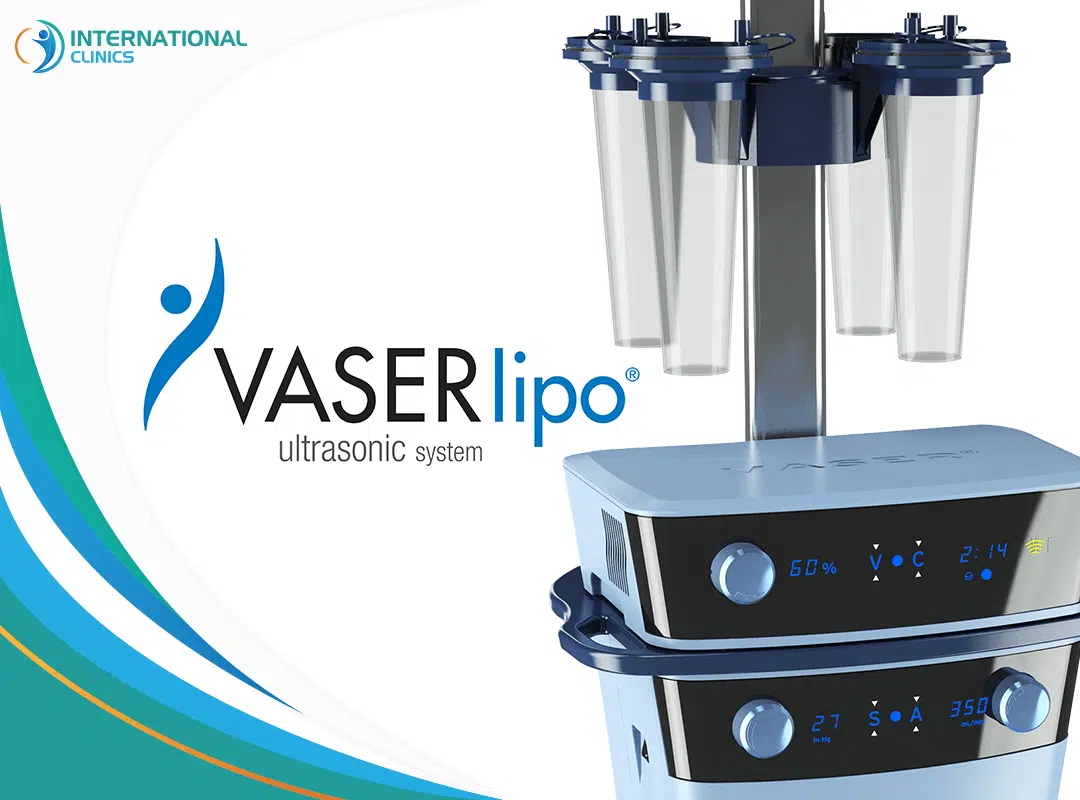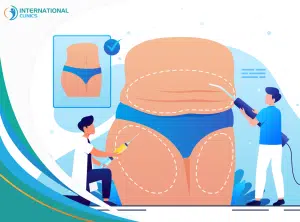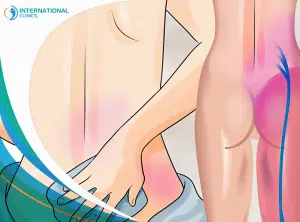Are you tired of stubborn fat that just won’t budge, no matter how hard you try? Vaser liposuction is here to rescue you from your body contouring woes.
This cutting-edge cosmetic procedure has revolutionized liposuction in Turkey, offering a minimally invasive technique that delivers outstanding results.
Vaser liposuction is a cosmetic surgery procedure that utilizes ultrasound technology to precisely target and eliminate unwanted fat deposits. Unlike traditional liposuction techniques, Vaser liposuction uses sound waves to break down fat cells before gently suctioning them away.
Say goodbye to unwanted fat and hello to a more confident you with vaser liposuction! join us to learn how is liposuction done, from start to finish.

How Vaser Liposuction Works
Vaser liposuction is an innovative technique that has gained popularity due to its effectiveness and ability to provide precise body contouring results. This Liposuction is an outpatient procedure that is typically performed in a clinic or surgical center.
Ultrasound Energy: A Breakdown of Fat Cells
One of the key aspects of vaser liposuction is the use of ultrasound energy. During the procedure, a small probe emitting ultrasonic waves is inserted into the targeted area. These high-frequency sound waves specifically target and disrupt fat cells, while leaving other tissues unharmed.
The ultrasound energy emitted by the probe causes the fat cells to vibrate rapidly, leading to their emulsification or liquefaction. This process breaks down the fat cells into smaller particles, making it easier for them to be removed from the body.
Gentle Suction: Removing Emulsified Fat
Once the fat cells have been effectively emulsified, they are gently suctioned out of the body using a thin cannula. The surgeon carefully maneuvers the cannula through small incisions made in inconspicuous areas, such as natural skin creases or within existing scars.
The gentle suction allows for precise removal of excess fat deposits from various areas of the body. Whether it’s stubborn belly fat, thigh bulges, or flabby arms, vaser liposuction can be performed on different regions to help achieve a more sculpted appearance.
Local Anesthesia: Ensuring Comfort during Procedure
To ensure patient comfort during vaser liposuction, local anesthesia is typically used. This means that only the specific treatment area is numbed while you remain awake throughout the procedure. Local anesthesia not only minimizes risks associated with general anesthesia but also allows for faster recovery times.
Under local anesthesia, patients can communicate with their surgeon during the procedure if necessary. This open line of communication ensures that the surgeon can address any concerns or adjust their approach based on the patient’s feedback.
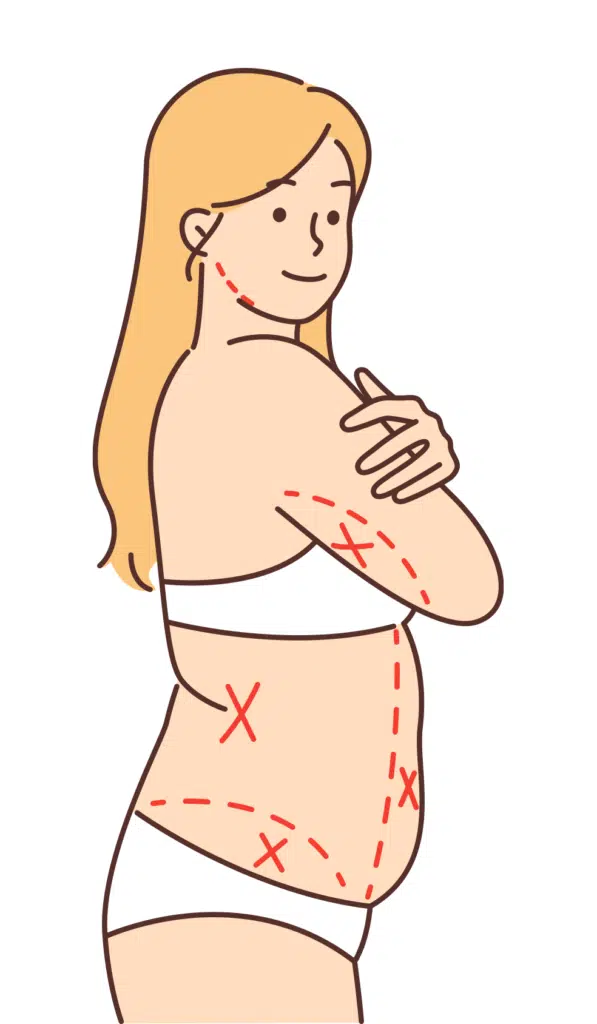
Now you can have a free medical consolation
Targeted Areas and Treatment Frequency
Vaser liposuction can effectively address stubborn fat deposits in multiple body areas. Some of the most commonly treated regions include:
| Abdomen | The abdominal area is a frequent concern for many patients seeking body contouring. Vaser liposuction can help achieve a flatter and more defined midsection by targeting unwanted fat. |
| Hips | The hips are another area where excess fat tends to accumulate. By selectively removing fat cells through Vaser liposuction, patients can achieve smoother contours and an enhanced overall shape. |
| Thighs | Whether it’s the inner or outer thighs, Vaser liposuction can be employed to reduce localized pockets of fat. This technique allows for precise sculpting, resulting in improved thigh contours. |
| Buttocks | For individuals looking to enhance their buttocks’ appearance, Vaser liposuction can be used as part of a Brazilian Butt Lift procedure. By removing unwanted fat from surrounding areas like the lower back or thighs, surgeons can create a more shapely and lifted posterior. |
| Arms | Many patients struggle with excess fat in their upper arms that may be resistant to diet and exercise. Vaser liposuction offers an effective solution by selectively eliminating these fatty deposits and revealing slimmer arms. |
| Chest | Vaser liposuction can be used to treat gynecomastia, a condition characterized by excess breast tissue in males, helping to create a flatter and more masculine chest contour. |
| Neck | aser liposuction can enhance the definition of the neck and jawline by removing excess fat, resulting in a more youthful and well-defined appearance. |
| Back | Vaser liposuction can target unwanted fat on the back, including the upper and lower back, to create a more sculpted and streamlined appearance. |
Pros of Vaser Liposuction
Less invasive
- Vaser liposuction has gained popularity as a less invasive alternative to traditional liposuction. One of the major advantages of this technique is its minimally invasive nature. Unlike traditional liposuction that requires large incisions, vaser liposuction uses advanced ultrasound technology to target and break down fat cells without damaging surrounding tissues. This means smaller incisions, reduced scarring, and a lower risk of complications during the procedure.
Shorter recovery time
- Another notable benefit of vaser liposuction is the shorter recovery time compared to traditional methods. Since it is less aggressive on the body, patients typically experience less pain and discomfort post-surgery. They can often resume their daily activities sooner and require less downtime for recovery.
Improved skin tightening effect
- Vaser liposuction offers an improved skin tightening effect compared to other forms of fat removal. The ultrasound energy used in this procedure stimulates collagen production in the skin, leading to firmer and more toned results. This makes it an ideal choice for individuals who not only want to reduce excess fat but also desire tighter and smoother skin.
Cons of Vaser Liposuction
Higher cost compared to traditional liposuction
- Cost can be a significant factor for many individuals seeking fat removal treatments. Vaser liposuction tends to be pricier than traditional methods due to the specialized equipment required and the expertise needed to perform the procedure effectively. It’s important for patients to weigh their budget against their desired outcomes when making a decision.
Limited effectiveness for large-volume fat removal
- Another limitation of vaser liposuction is its effectiveness in treating large-volume fat removal. While it works well for targeting small pockets of stubborn fat deposits, it may not be the most suitable option for individuals looking to remove a significant amount of fat. In such cases, alternative procedures or a combination of treatments might be necessary to achieve the desired results.
Potential risks associated with any surgical procedure
- Lastly, it’s essential to acknowledge that vaser liposuction, like any surgical procedure, carries potential risks. Although rare, complications such as infection, bleeding, or adverse reactions to anesthesia can occur. It is crucial for patients to thoroughly discuss their medical history and any underlying conditions with their surgeon before undergoing the procedure. Following post-operative care instructions diligently can help minimize these risks and ensure a smoother recovery.
Book an appointment and get 20% discount
Vaser Liposuction vs. Traditional Liposuction
Vaser liposuction and traditional liposuction are both techniques used for removing unwanted fat from the body, but they differ in their approach and methodology. Here are some key differences between Vaser liposuction and traditional liposuction:
Technique: Vaser liposuction utilizes ultrasound energy to selectively target and emulsify fat cells before they are removed, while traditional liposuction relies on manual suction and mechanical manipulation to remove fat.
Fat Removal: Vaser liposuction allows for more precise and targeted fat removal compared to traditional liposuction. The ultrasound energy used in Vaser liposuction specifically targets fat cells, resulting in less trauma to surrounding tissues such as blood vessels and nerves.
Skin Tightening: Vaser liposuction promotes skin tightening due to the ultrasound energy stimulating collagen production. This can lead to improved skin elasticity and a more toned appearance. Traditional liposuction may not have the same skin tightening effect and may require additional procedures such as a tummy tuck to address skin laxity.
Recovery Time: Vaser liposuction generally involves a faster recovery period compared to traditional liposuction. The less invasive nature of Vaser liposuction can result in reduced post-operative discomfort, bruising, and swelling, leading to a quicker return to daily activities.
Anesthesia: Both Vaser liposuction and traditional liposuction can be performed under local anesthesia or general anesthesia. However, Vaser liposuction often allows for the use of milder forms of anesthesia, potentially reducing the risk and recovery associated with general anesthesia.
Cost: The cost of Vaser liposuction may be higher compared to traditional liposuction due to the advanced technology and specialized equipment used. However, the exact cost can vary depending on factors such as the treatment area, the surgeon’s expertise, and the location.
Recovery Period and Expected Results
The recovery process after Vaser liposuction is an important phase in achieving optimal results. here are some general steps and guidelines to expect during the recovery period:
- Immediately After the Procedure:
- You will be monitored in a recovery area to ensure your stability and comfort.
- The treated areas may be wrapped in compression garments or dressings to minimize swelling and support the healing process.
- You may experience some soreness, swelling, bruising, and fluid drainage from the incision sites.
- First Few Days:
- Follow your surgeon’s instructions regarding pain management and prescribed medications to alleviate any discomfort.
- Rest and take it easy during the initial days, avoiding strenuous activities and exercise.
- It is important to keep the compression garments or dressings in place as instructed by your surgeon to help control swelling and aid in the healing process.
- Maintain a healthy diet and stay well-hydrated to promote healing.
- Swelling and Bruising:
- Swelling and bruising are normal after Vaser liposuction and may last for a few weeks.
- Applying cold compresses to the treated areas as recommended by your surgeon can help reduce swelling and discomfort.
- Avoiding salty foods, alcohol, and smoking can assist in minimizing swelling.
- Compression Garments:
- Compression garments are typically worn for several weeks post-surgery to support the treated areas, minimize swelling, and promote proper skin contraction.
- Follow your surgeon’s instructions regarding the duration and frequency of wearing compression garments.
- Follow-up Appointments:
- Schedule and attend follow-up appointments with your plastic surgeon as advised.
- During these appointments, your surgeon will assess your healing progress, remove any sutures or drains if necessary, and provide further guidance on your recovery.
- Gradual Resumption of Activities:
- As you progress through the recovery process, you can gradually resume light activities and work, following your surgeon’s recommendations.
- Avoid any strenuous exercises, heavy lifting, or activities that may strain the treated areas for a few weeks.
- Gradually increase your activity level based on your surgeon’s guidance.
- Long-Term Results:
- It may take several weeks or months for the full results of Vaser liposuction to become apparent as the swelling subsides and the body heals.
- Maintain a healthy lifestyle, including regular exercise and a balanced diet, to help maintain your new body contours and optimize long-term results.
A medical team at the best international standards
Risks and Side Effects of Vaser Liposuction
While Vaser liposuction can provide excellent results for many individuals, it’s important to be aware of the potential risks and side effects associated with this procedure. By understanding these risks, you can make an informed decision about whether Vaser liposuction is right for you.
Potential Risks
- Infection: Like any surgical procedure, there is a risk of infection with vaser liposuction. The incisions made during the procedure create an entry point for bacteria, which can lead to infection if proper care isn’t taken. To minimize this risk, it’s crucial to follow your surgeon’s post-operative instructions regarding wound care and hygiene.
- Bleeding: During vaser liposuction, small blood vessels are disrupted as fat is removed from the body. This can result in bleeding both during and after the procedure. While your surgeon will take steps to control bleeding during surgery, it’s possible to experience some bleeding afterwards as well. It’s important to monitor your incision sites closely and contact your surgeon if you notice excessive bleeding.
- Scarring: Vaser liposuction involves making small incisions through which a cannula is inserted to remove fat cells. While these incisions are typically small and well-hidden, there is still a chance of scarring. Most scars fade over time but discussing scar management options with your surgeon may help minimize their appearance.
- Uneven Contouring: Achieving optimal contouring requires skill and precision on the part of the surgeon. However, even in experienced hands, there may be cases where unevenness or irregularities occur after vaser liposuction. It’s essential to choose a board-certified plastic surgeon who has extensive experience with this technique to reduce the risk of such complications.
Temporary Side Effects
- Numbness: It is common to experience temporary numbness in the treated areas after vaser liposuction. This occurs due to nerve irritation during the procedure. The sensation typically resolves within a few weeks or months as the nerves heal, but it’s important to be patient and allow your body time to recover.
- Soreness: Following vaser liposuction, you can expect some soreness and discomfort in the treated areas. This is a normal part of the healing process and should gradually subside over time. Your surgeon may prescribe pain medication or recommend over-the-counter options to help manage any discomfort.
- Skin Discoloration: Temporary skin discoloration, such as bruising or redness, is common after vaser liposuction. This occurs due to the trauma caused by the procedure and will typically resolve on its own within a few weeks. Wearing compression garments as advised by your surgeon can help minimize bruising and aid in faster recovery.
Minimizing Risks
To minimize risks and ensure a successful outcome with vaser liposuction, there are several key steps you can take:
- Choose an experienced surgeon: Opt for a board-certified plastic surgeon who specializes in vaser liposuction. Their expertise and skill will significantly reduce the likelihood of complications.
- Discuss potential risks with your surgeon: Before undergoing the procedure, have an open conversation with your surgeon about any concerns you may have regarding risks or side effects. They can provide personalized advice based on your specific situation.
- Follow post-operative instructions: To promote proper healing and reduce the risk of complications, carefully follow all post-operative instructions provided by your surgeon. This includes taking prescribed medications, wearing compression garments if recommended, and attending follow-up appointments.
Permanent Effects of Vaser Liposuction
One of the key benefits of Vaser liposuction is its ability to permanently remove fat cells from treated areas. Once these fat cells are gone, they are gone for good! However, it’s important to note that while the treated areas will remain free from those particular fat cells, remaining ones in other parts of your body can still expand if weight is gained.
It’s essential to understand that results can vary depending on individual factors such as genetics and age. Some individuals may naturally have more stubborn pockets of fat or slower metabolisms than others, making it harder for them to achieve their desired aesthetic goals with just diet and exercise alone.
To ensure long-term results after Vaser liposuction, maintaining a healthy lifestyle is crucial. Regular exercise and a balanced diet will help prevent new fat deposits from forming in untreated areas and keep your body looking trim and toned. Think of it as an opportunity for a fresh start – embrace this newfound confidence and make healthy choices that support your new figure!
Secure your appointment at International Clinics by booking now
Expected Results and Maximizing Outcomes
Typically, it takes several weeks or even months for the final results of vaser liposuction to become evident. During this period, it’s crucial not to get discouraged if progress seems slow initially. Be patient with yourself as your body adjusts and heals naturally.
Engaging in physical activity not only helps burn calories but also tones and strengthens your muscles, complementing the enhanced body contour achieved through vaser liposuction. Consuming a balanced diet rich in fruits, vegetables, lean protein, and whole grains provides your body with the necessary nutrients for optimal health and energy levels.
Every individual is unique, and their goals for vaser liposuction may vary. It’s crucial to have open and honest communication with your surgeon before undergoing the procedure to discuss your specific expectations.
Vaser Liposuction Cost
The cost of Vaser liposuction can vary depending on several factors, including the geographical location, the extent of the procedure, the number of treatment areas, the surgeon’s expertise, and additional fees such as anesthesia and facility charges.
On average, The cost of Vaser liposuction in USA can range from $6,500 to $12,000 or more and the cost of Vaser liposuction in Turkey can range from around $1,500 to $5,000 per treatment area. However, it’s important to note that this estimate is a rough range and can vary significantly based on the factors mentioned above.
Turkey is known for its competitive prices in the field of medical tourism, including cosmetic surgery procedures like Vaser liposuction. Liposuction cost in Turkey may be lower compared to some other countries, but it’s crucial to prioritize the qualifications and experience of the surgeon and the quality of the healthcare facility when considering the cost.
It’s worth noting that while cost is an important consideration, patients should prioritize finding a qualified and experienced surgeon. Therefore, it is advisable not to solely base the decision on cost but also to take into account the surgeon’s reputation and track record.
Conclusion
In conclusion, Vaser liposuction is a revolutionary procedure that has transformed the field of body contouring. Vaser liposuction has empowered individuals to achieve their desired body contours and boost their self-confidence.
Remember, maintaining a healthy lifestyle with regular exercise and a balanced diet is crucial to optimize and sustain the results of Vaser liposuction in the long run. Embrace the transformative power of Vaser liposuction and embark on a journey toward a more sculpted and confident you.
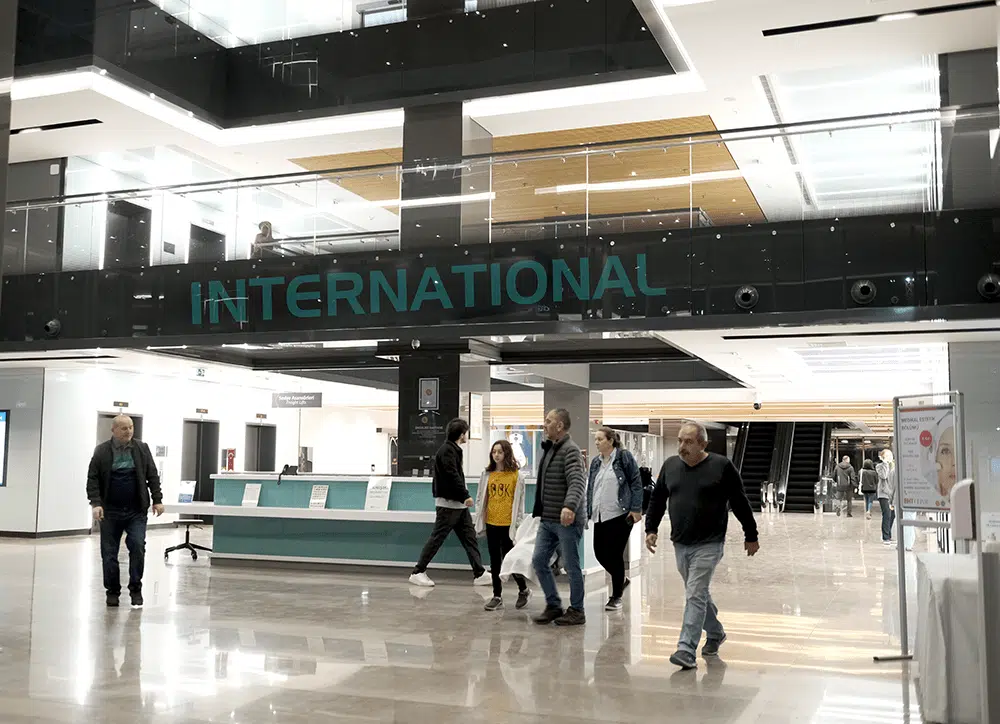
FAQs
During vaser liposuction, you will typically be awake. Local anesthesia combined with tumescent fluid is used to numb the treatment area and minimize discomfort.
Yes, it is possible to undergo vaser liposuction under general anesthesia if you prefer to be completely unconscious. However, this carries additional risks and requires careful monitoring by an anesthesiologist.
The duration of anesthesia during vaser liposuction depends on various factors such as the extent of the procedure and your individual response. Local anesthesia typically wears off within a few hours, while general anesthesia effects can last longer.
General anesthesia carries risks such as allergic reactions, breathing difficulties, and adverse reactions to medications. It is important to discuss any concerns or pre-existing medical conditions with your surgeon and anesthesiologist before deciding on this option.
You can discuss your preferences regarding anesthesia options with your surgeon. They will consider factors such as your medical history, overall health condition, and previous experiences with anesthesia to determine which option is most suitable for you.
